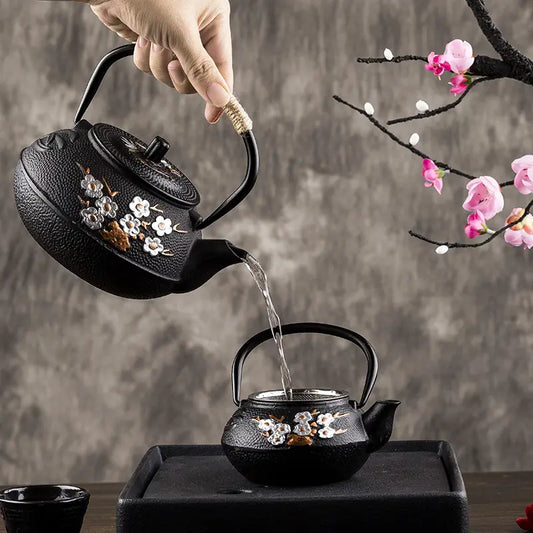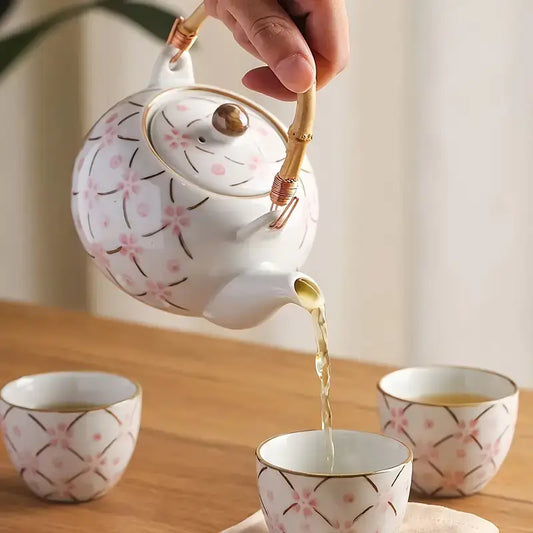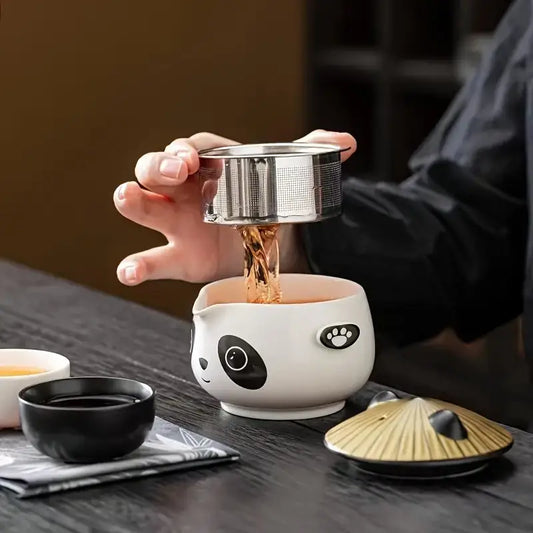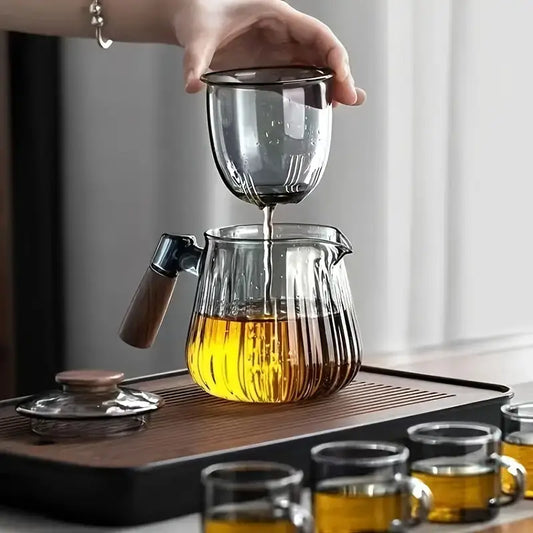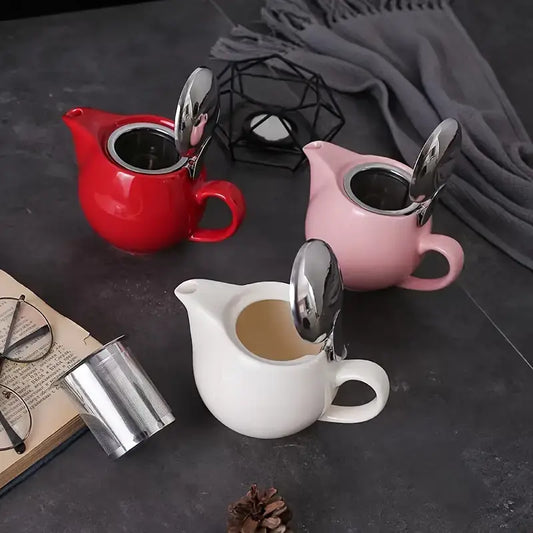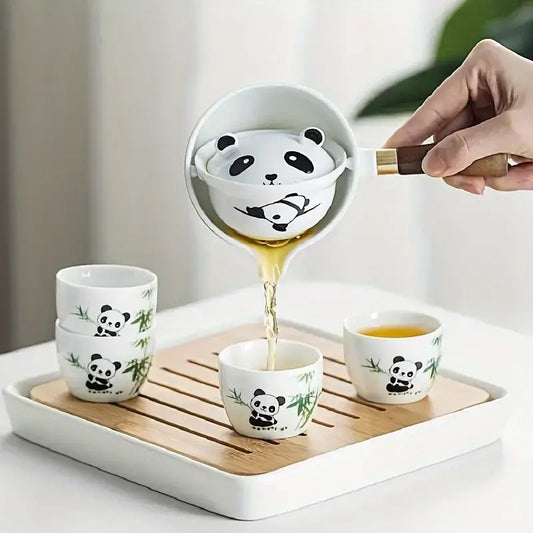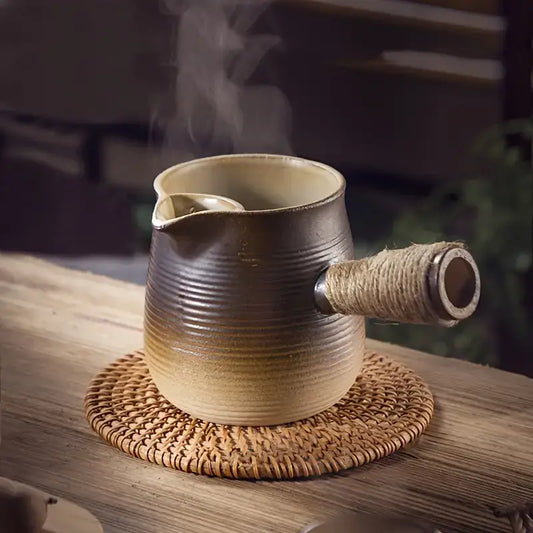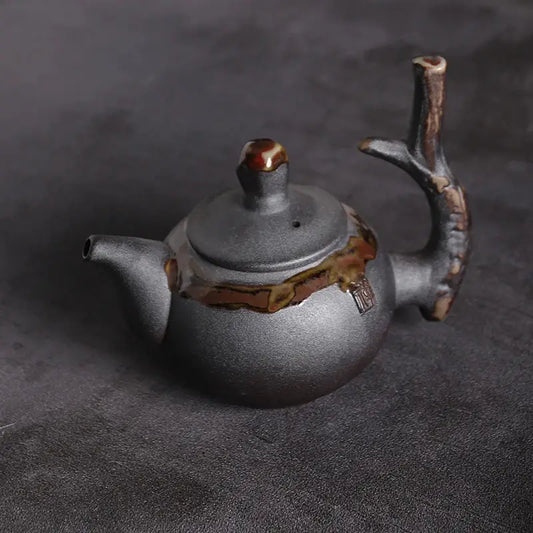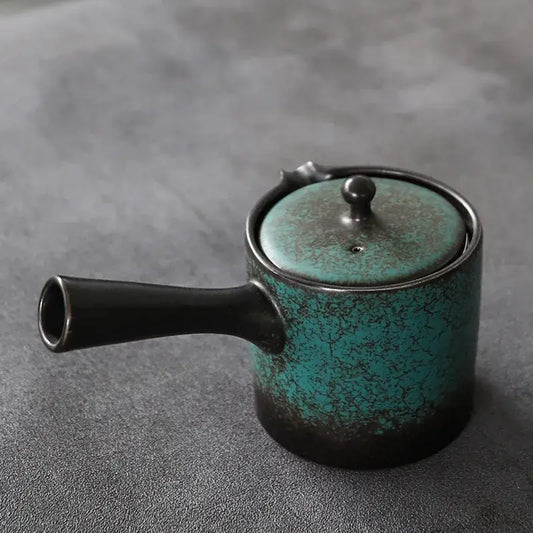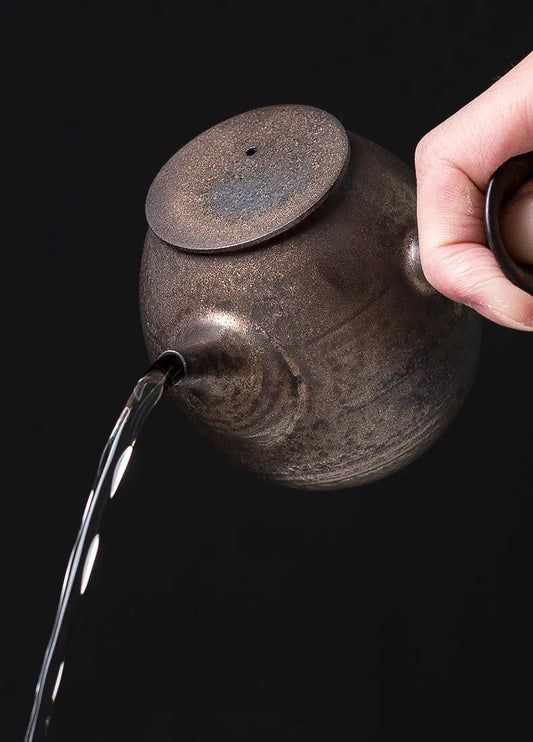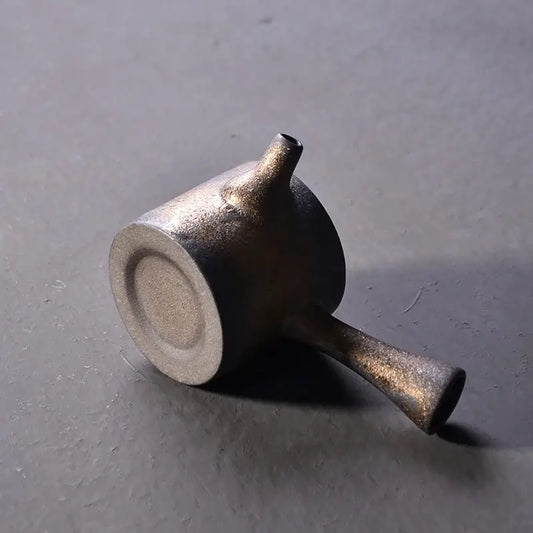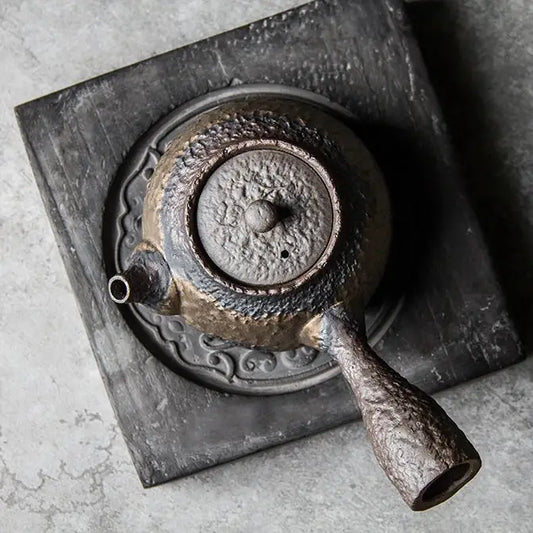Pouring Heritage: Discover the Essence of the Japanese Teapot
Welcome to the serene and refined world of the Japanese Teapot — a symbol of harmony, elegance, and daily mindfulness. Far beyond being a mere vessel for brewing tea, the Japanese teapot, or kyūsu, is a masterpiece of cultural ritual, refined design, and artisan skill. Whether used in tranquil tea ceremonies or as a centerpiece in contemporary homes, it embodies the spirit of thoughtful living. 🌸
The Japanese teapot connects us to centuries of tea tradition, from the hushed tatami rooms of Kyoto to the rustic kilns of Tokoname. With every pour, it brings balance and grace, inviting us to pause, breathe, and appreciate the art of simplicity.
Our curated Japanese Teapot collection showcases timeless clay and porcelain forms, hand-glazed textures, and regional craftsmanship. Designed for tea lovers and aesthetic seekers alike, each piece reflects the soul of Japan’s tea heritage. ✨
The Heart of Tea Culture: History and Forms of the Japanese Teapot
The Japanese teapot dates back to the 15th century, deeply rooted in the evolution of chanoyu, the Japanese tea ceremony. Influenced by Chinese tea customs and honed into an indigenous art form by masters like Sen no Rikyū, the teapot became central to both formal and everyday tea practice.
Japan is home to several distinct teapot styles and kilns, each offering unique traits:
| Teapot Type | Key Features & Origin |
|---|---|
| Tokoname Kyūsu | Unglazed red clay, side handle, rustic elegance |
| Banko-yaki | Heat-resistant stoneware, purple clay, often lidded |
| Hagi-yaki | Porous clay, soft glazes, famous for aesthetic aging |
| Porcelain Teapots | White or blue & white, detailed hand-painting |
| Tetsubin | Cast iron, excellent heat retention, robust and decorative |
Each type of teapot reflects the character of its region and its clay. Tokoname's iron-rich earth, for example, subtly enhances the flavor of green teas, while porcelain preserves aroma with clinical purity.
The form of the kyūsu — with its lateral handle and perfectly fitted lid — isn’t just beautiful; it is engineered for optimal balance, grip, and pour.
Why the Japanese Teapot is a Modern-Day Treasure
In today’s fast-paced, mechanized world, the Japanese teapot offers a sanctuary of slowness and intentionality. Here’s why every tea lover and design enthusiast should own one:
-
Functional Beauty: The perfect synergy of form and function. Thoughtfully designed spouts, lids, and handles offer the smoothest pour and heat balance.
-
Enhanced Flavor: Unglazed clay teapots interact with tea oils to deepen flavor, while porcelain captures delicate aromatics.
-
Artisan Heritage: Each piece is often handmade, showcasing techniques passed down through generations.
-
Sustainable Design: Crafted from natural materials, Japanese teapots align with mindful living and eco-conscious values.
-
Cultural Connection: Every use becomes a mini tea ceremony, a moment of mindfulness that honors centuries of tradition.
Owning a Japanese teapot is not just about making tea — it's about elevating the everyday. It becomes a companion to your rhythm, your rituals, and your home.
Brewing in Style: How to Use and Display Your Japanese Teapot
Making tea in a Japanese teapot is a mindful process that enhances both flavor and atmosphere. Here's how to use your kyūsu and incorporate it into your daily life:
-
Proper Brewing Technique:
-
Preheat the pot with hot water, then discard.
-
Add tea leaves — sencha, gyokuro, or genmaicha are traditional favorites.
-
Pour in water at the correct temperature (e.g., 70°C for sencha).
-
Steep briefly, then pour evenly across cups without shaking.
-
-
Tea Pairings: Green teas pair naturally with clay pots, while porcelain suits floral or white teas. For bold infusions, a tetsubin is ideal.
-
Caring for Your Teapot: Never use soap on unglazed pots. Rinse with warm water and allow to air dry fully before storing.
-
Display with Intent: Place your teapot on a lacquered tray, with matching cups, a bamboo scoop, or a washi paper coaster for elegant presentation.
| Usage Tip | Why It Matters |
| Preheating Pot | Maintains stable temperature for better infusion |
| Pouring Gently | Preserves leaf integrity and flavor |
| Matching Tea & Pot | Enhances taste and cultural context |
| Thoughtful Display | Turns tea into a visual and meditative experience |
Drinking tea becomes more than a beverage — it becomes an art, a gesture, a ritual.
Harmonizing the Japanese Teapot with Your Space and Style
Your Japanese teapot is more than a kitchen item — it’s a piece of your living story. Here’s how to integrate it into your aesthetic for maximum harmony:
-
Minimalist Homes: Choose matte clay or black-glazed kyūsu for quiet elegance. Pair with wooden trays and linen napkins.
-
Boho Zen Spaces: Display a hand-painted porcelain teapot among rattan baskets, floor cushions, and incense holders.
-
Traditional Corners: Set up a tatami mat nook with a low table, tea accessories, and soft natural lighting.
-
Modern Chic Settings: A cast-iron tetsubin makes a bold centerpiece on marble countertops or glass shelving.
-
Seasonal Rotations: Switch teapots with the season — floral Hagi in spring, rustic Tokoname in autumn, sleek porcelain in summer.
| Home Style | Recommended Teapot | Pairing Accent |
| Minimalist | Matte Tokoname or black clay kyūsu | Wooden tray, tea cup |
| Traditional Japanese | Hagi-yaki or Banko-yaki | Tatami mat, tea scoop, matcha whisk |
| Modern Urban | Cast-iron Tetsubin | Concrete or marble counter, sleek cups |
| Eclectic/Artistic | Painted porcelain or hand-glazed | Ceramic vases, wall scrolls, ikebana |
Let your teapot become part of your design vocabulary — quietly powerful and aesthetically fluent.
Tea, Time, and Tranquility: The Timeless Value of the Japanese Teapot
Owning a Japanese teapot is about more than function. It's about embracing a way of life that celebrates stillness, care, and ritual. In a world of instant gratification, the kyūsu teaches us to pause and pour slowly, to notice, to savor.
Each cup brewed carries not just flavor, but the essence of craft and culture. From clay earth to the hands of artisans to your shelf, the journey of a teapot is deeply human.
Explore our curated collection of Japanese Teapots to find your ideal match. From minimalist Tokoname pots to intricate porcelain pieces and robust cast-iron kettles, our range invites you to discover your perfect tea ritual.
Brew slowly. Live intentionally. Let tradition steep into your modern moments. ☕️🌟


